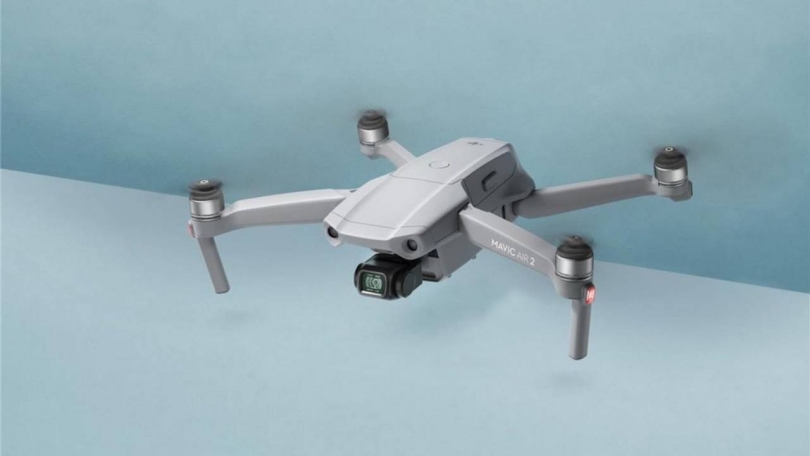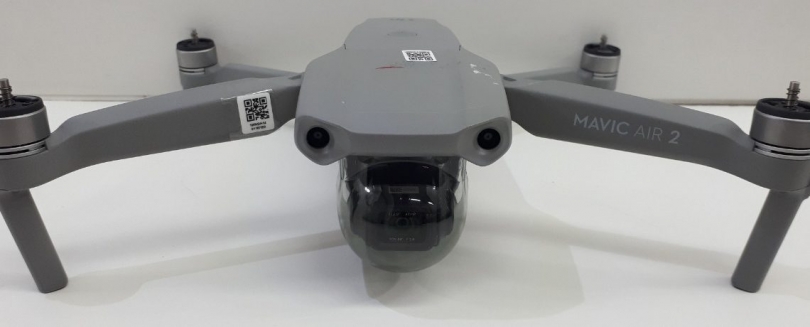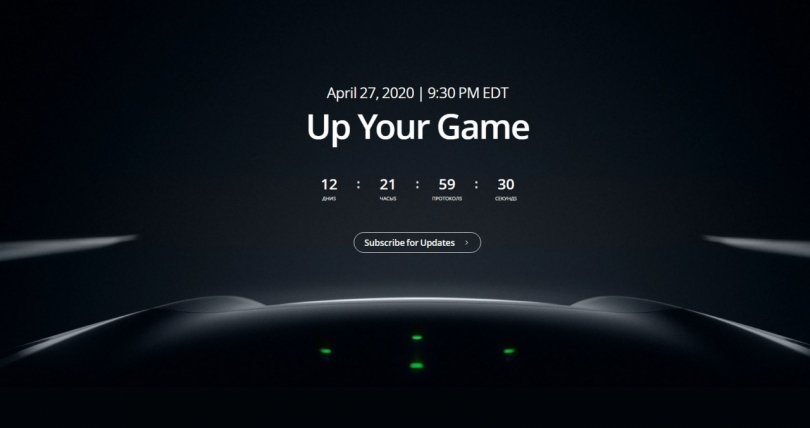
Introduction The DJI Air 2S addresses one of the most common feature requests from drone users: a 1"-type sensor camera in a consumer-oriented model. Until recently, DJI users either had to make do with smaller sensors, similar to those found in smartphones, or spend more than $1500 for one of DJI's more expensive prosumer models, such as the Mavic 2 Pro or Phantom 4 Pro.
The Air 2S changes that equation, arriving at a price point of $1000. As the newest model in the lineup, it benefits from the latest DJI features and technologies, many of which are covered in our DJI Air 2S review.
But sensor size isn't everything. How does the Air 2S compare to DJI's other foldable drone with a 1"-type sensor, the Mavic 2 Pro? Let's take a look as there are still some important differences between the two models.
Physical and performance differences
Above: The DJI Air 2S (left) and Mavic 2 Pro (right).
The most obvious difference between models is size. The Air 2S is noticeably smaller and more compact and checks in at just 65% of the weight of the Mavic 2 Pro.
Air 2S
Mavic 2 Pro
Size (folded)
180 x 97 x 77mm
214 x 91 x 84mm
Weight
595g
907g
It's enough to be immediately noticeable, and it makes the Air 2S a better choice for travel. However, the Mavic 2 Pro's extra mass can make it a bit more stable in a stiff wind.
Both models have similar performance characteristics. The Mavic 2 Pro has a maximum speed of 72 km/h (45 mph) in Sport mode, edging out the Air 2S's top speed of 68 km/h (42 mph), but in practical terms, there's not much difference. Both claim to achieve a 31-minute flight time, which is consistent with our testing.
Subjectively, we found the Mavic 2 Pro quieter as well, with a noticeably less shrill pitch when in flight.
Camera
Both models have cameras built around 20MP, 1"-type CMOS sensors, but camera specs diverge quickly from there. The Air 2S (pictured above) has a 22mm equiv. lens with a fixed F2. 8 aperture, whereas the Mavic 2 Pro has a 28mm equiv. F2. 8-11 lens.
Any experienced photographer will immediately recognize that there's a big difference between 22mm and 28mm. Want big open vistas? The Air 2S may be for you. On the other hand, if you want to keep closer to the action or a subject, the Mavic 2 Pro may be a better choice.
The variable aperture lens on the Mavic 2 Pro adds a great deal of flexibility. In bright conditions, it provides the option to adjust exposure by stopping down the aperture to maintain an optimal shutter speed for video, even when shooting at base ISO. The fixed F2. 8 aperture on the Air 2S means you'll be more reliant on ND filters, even when making small exposure changes.
Both models feature 3-axis gimbals, but the Air 2S also includes DJI's RockSteady EIS (electronic image stabilization) that's found on products like DJI's FPV drone and action camera for even more steady footage.
Video capabilities
Video is where the Air 2S really shines. It captures 5. 4K/30p video using the sensor's full width and native resolution, resulting in very detailed video. It can also capture 4K/60p at full width using pixel binning or from a native 4K crop of the sensor, resulting in a narrower field of view.
In contrast, the Mavic 2 Pro can capture 4K/30p video using the width of its sensor, though it's pixel-binned, so from a native 4K crop; its best 4K footage is captured with a cropped field of view. For faster frame rates, you'll need to drop your resolution to 2. 7K/60p.
The Air 2S captures video at 150 Mbps, compared to 100 Mbps on the Mavic 2 Pro. Both include support for 10-bit D-Log gamma and 10-bit HLG video, H. 264 and H. 265 recording, and 1080/120p capture.
The Air 2S also allows zooming during video (up to 4x in 4K resolution and up to 8x in FHD), though it's a digital zoom, so there is a resolution loss - set your expectations accordingly.
Photo capabilities
Both drones offer 20MP resolution for photos, including JPG and Raw (DNG) capture, and include support for special photo modes like spherical photos and panoramas (horizontal and vertical). Both also support HDR photo capture and DJI's HyperLight technology, which blends multiple shots for less noisy images, similar to a smartphone.
The Air 2S includes a scene recognition algorithm that recognizes common elements in a photo, like sunsets, blue skies, or snow, and adjusts exposure accordingly. A feature called SmartPhoto automatically selects between the various computational modes to give you the best image.
The Air 2S also has another cool trick up its sleeve. Thanks to DJI's RockSteady EIS, it can capture long exposures – up to 8 seconds – for night shots or to create motion blur. (The image above is a 6-second exposure. )
The Mavic 2 Pro is unique in including Hasselblad's Natural Color Solution (HNCS), which purports to deliver superior color. This will matter most to those shooting JPG images but is arguably less important if you plan to shoot and process Raw images.
Video transmission
Both models use DJI's OcuSync video transmission technology to deliver a clear video feed to the remote. The Mavic 2 Pro uses the previous generation of the technology, OcuSync 2. 0, while the Air 2S features the newer OcuSync 3. 0 (now rebranded as 'O3').
Both versions provide dual-frequency 2. 4 and 5. 8 GHz support and allow you to stream and capture 1080p video on your smartphone during flight. The Air 2S has also been upgraded to include four antennas for more reliable transmission.
DJI claims a range of 10km for OcuSync 2. 0 and 12km for O3. From a practical standpoint, few pilots will ever fly at those ranges, particularly if they maintain a visual line of sight with the drone. What all that technology and range boils down to is a robust and reliable transmission system that's less likely to be impacted by interference or challenging environments like tall buildings in urban areas. Both models perform well in this regard.
Intelligent flight features
Both drones include intelligent flight features to help capture cinematic video. The Mavic 2 Pro includes DJI's ActiveTrack 2. 0, which automatically follows a subject, and Point of Interest 2. 0, which can circle a subject. The Air 2S upgrades these to ActiveTrack 4. 0 and Point of Interest 3. 0, and in our testing, the Air 2S does a better job at tracking subjects.
The Air 2S also includes DJI's Spotlight 2. 0, a feature that keeps the camera pointed at the subject while you fly the drone.
A big addition to the Air 2S is DJI's new MasterShots feature. With MasterShots, the drone automatically launches into a series of pre-programmed shots, then stitches them together into a video with music and titles. It's a great way for casual flyers to quickly generate a fun video and share it right from a smartphone.
Both models support DJI's Quickshots modes like Dronie (pictured above), Asteroid, and Boomerang, for easily grabbing a variety of pre-programmed camera moves.
Safety features
The Mavic 2 Pro includes an omnidirectional obstacle avoidance system including forward, backward, downward, upward, and sideways sensors. The Air 2S comes close but doesn't include the sideways sensors. However, DJI claims it upgraded the obstacle avoidance sensors on the Air 2S to incorporate binocular zooming technology to recognize incoming objects from further away and at faster speeds.
Both models feature DJI's Advanced Pilot Assistance System (APAS), designed to navigate around objects in the drone's path automatically. This technology has improved over time, and in our testing, the Air 2S, which features the newest APAS 4. 0, was noticeably more effective at sensing and navigating around objects.
The Air 2S also includes DJI's AirSense safety system, which warns pilots of nearby planes or helicopters transmitting ADS-B (Automatic Dependent Surveillance-Broadcast) signals, allowing the pilot to move the drone to a safe location. You can expect this to become a standard feature on future models.
Controllers
The Air 2S and Mavic 2 Pro have very different controllers. Which one is most appealing will likely come down to user preference. The controller for the Mavic 2 Pro (above) mounts a smartphone below the controls and includes a helpful display that keeps vital flight information available at a glance, making it easy to monitor key data right from the controller.
The controller for the Air 2S mounts the smartphone above the controls, which feels a bit more intuitive, but it lacks a dedicated status display. It's similar to controllers used on other recent DJI models such as the Mavic Air 2 and Mini 2.
Both drones are also compatible with the DJI Smart Controller, which includes a built-in 5. 5" HD display that's easier to see and doesn't tie up your smartphone while you fly.
Smartphone app
This is another area where each model provides a different user experience since each uses a different app to control the drone. The Mavic 2 Pro uses DJI's GO 4 app, which has supported numerous DJI models over the years. GO 4 will likely appeal to more advanced pilots and drone nerds who want to dive into settings.
The Air 2S uses the newer DJI Fly app (pictured above), a pared-down and streamlined app with more intuitive menus and screens. We think most casual flyers will prefer the Fly app, but you can master both with a bit of practice.
Accessories
No matter which drone you choose, you'll probably want some accessories like extra batteries or a charging hub. DJI sells a 'Fly More' kit for each model that includes several items, but the price and contents are somewhat different.
For $399, the Mavic 2 Pro Fly More kit includes two additional batteries, a charging hub, a car charger, an additional set of propellers and a shoulder bag. For $299, the Air 2S Fly More kit includes two additional batteries, a charging hub, a shoulder bag and a set of ND filters (pictured). The lower cost, and the inclusion of the ND filters, arguably make the Air 2S kit a better bargain.
The Mavic 2 Pro is also compatible with DJI Goggles. We had hoped the Air 2S would be compatible with both the FPV Goggles and the new motion controller introduced alongside DJI's FPV drone, but DJI says it doesn't currently plan to support these devices.
Conclusion
In most cases, the Air 2S (pictured) is the best choice for most users. It's significantly less expensive ($1000 vs. $1600 for the Mavic 2 Pro), is smaller and lighter, and matches or exceeds the Mavic 2 Pro in many important areas, though not without some exceptions.
In particular, the Air 2S's ability to capture 5. 4K/30p video provides a clear edge for serious videographers. The new MasterShots feature makes it very easy to create short videos with music and titles for sharing.
However, the Mavic 2 Pro still offers unique features that will matter to certain users. The variable aperture F2. 8-11 lens provides a lot more flexibility to adjust exposure in-flight, and the tighter 28mm equiv. lens will appeal to some. More advanced users may prefer its controller and appreciate the sideways obstacle avoidance sensors, as well as compatibility with DJI's Googles.
Ultimately, both models are fun to fly and produce great imagery - a win for all users.
. dpreview.com2021-4-29 17:00










